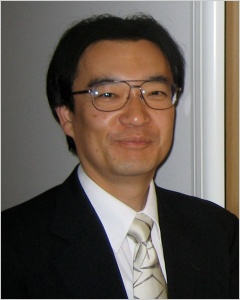Jul 3 2008
ECS engineers are developing the world's smallest, high-performance and low-power sensor in silicon which will have applications in biosensing and environmental monitoring.
 Professor Hiroshi Mizuta
Professor Hiroshi Mizuta
Professor Hiroshi Mizuta and his team at ECS are part of the three year European FP7-funded NEMSIC (Nano-electro-mechanical-system-integrated-circuits) project which will make these devices possible.
As well as being the smallest sensor on the market to date, it will have extreme sensitivity and very low power consumption. It will achieve this by co-integrating single-electron transistors (SETs) and nano-electro-mechanical systems (NEMS) on a common silicon technology platform.
‘Power consumption is a big issue at the moment as devices use current whether they are switched off and on,’ said Professor Mizuta. ‘The single-electron transistor combined with the NEM device technology reduces power consumption at both ON and OFF states of the sensor. Stand-by power is reduced to zero by having a complete sleep with the NEM switch when it is off.’
Professor Mizuta and his team will develop the single-electron transistor with a unique suspended silicon nanobridge which will work as an extremely sensitive detector for biological and chemical molecules.
‘This is the first time that anyone has combined these two nanotechnologies to develop a smart sensor,’ said Professor Mizuta. ‘The traditional CMOS (Complementary metal-oxide-semiconductor) approach has many limitations so we needed to find a new approach.’
The sensing devices will need to be made to the nanoscale, which will be made possible by the new electron beam lithography machine which will be available in the new ECS Mountbatten building when it opens in a few months.
‘This sensor will be the smallest and use less power than any other on the market,’ said Professor Mizuta. ‘The fact that it will be at the nanoscale means that it will be able to detect either single-charge transfer and/or change in masses caused by a small amount of chemical and biological molecules electrically’.
NEMSIC is headed by Professor Adrian Ionescu of Ecole Polytechnique Fédérale de Lausanne and other partners are: Delft University of Technology, Stitching IMEC Nederland, Commissariat à l’Energie Atomique – Laboratoire d’Electronique de la Technologie de l’Information, SCIPROM Sarl, Interuniversity Micro-electronics Center, Honeywell Romania SRL – Sensors Laboratory Bucharest, Université de Genève.